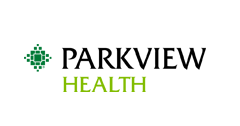Quantitative Effect of Emergency Department Case Management on Visits, Diagnostics, and Cost
Abstract
Background: Frequent users of the ED have been identified as a major contributing factor to over-use of EDs resulting in decreased efficiency of health care delivery and increased costs. Objective: In 2012, Parkview Health initiated a case management (CM) program with the hypothesis that it would reduce emergency department (ED) visits, radiation exposure, and costs for patients who had visited a Parkview ED 5 or more times within 6 months. Methods & Design: This retrospective case series involved examining medical records of 460 CM patients from 2011 to 2018, recording the amount of Parkview ED visits, diagnostic tests, and affected cost accumulated in the year prior to CM enrollment compared to each of the next 2 years. Demographics, chief complaints, diagnoses, psychiatric and drug use history, and whether the patients had insurance and a primary care provider were also recorded. Patient data was excluded if the patient was younger than 18 at the time of CM enrollment, had not yet completed 2 years in the CM program, or if medical records were not available. ANOVA and 1-sided, paired t-testing were performed to evaluate significance of the results. Results: Comparing the year before enrollment to the 2nd year after, ED visits were reduced from 5,264 to 2,012 for 378 patients (63%, p<0.01), the affected cost was reduced from $551,734.45 to $246,248.34 for 299 patients (55%, p<0.01), and the number of diagnostic tests was reduced from 6,040 to 1,883 for
104 patients (69%, p<0.01). Conclusion: Patients enrolled in Parkview’s CM program showed statistically significant reductions in ED visits, radiologic exposures, and affected costs over 2 years, with implicit improved health outcomes. Projected 10-year affected cost savings range from $3.7 million to $9.1 million.

